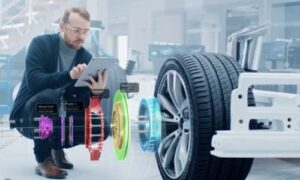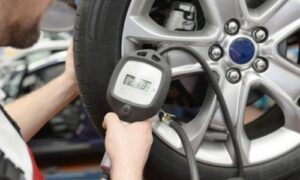Sunroof Customization Introduction
This comprehensive guide will explore the various customization options available for sunroofs, allowing you to find your perfect style and make a statement on the road, including sunroof customization. Since the 1920s, cars have incorporated sunroofs as a feature, although the design has undergone significant changes. There are many sunroof types for cars, each offering distinctive benefits and design appeal that contribute to the car’s overall aesthetic and driving experience.
Functioning as a means of infusing elegance and style into a vehicle, a sunroof serves a dual purpose of form and function. The sunroof can be stationary or configured to open, employing various methods and mechanisms to retract the panel. Some sunroof variations are seamlessly integrated into the car’s original design, while others can be added as an aftermarket accessory.
The automotive sunroof market valuation will reach US$ 7.42 billion in 2023. In 2022, the market recorded a valuation of US$ 6.73 billion.
In contemporary automobiles, sunroofs are a prominent design element, imparting a sense of liberation and a delightful touch of sunlight on the skin during drives. Diverse types of sunroofs have been developed, offering varying degrees of exposure to the elements and introducing a novel dimension to the car’s overall visual appeal.
The Evolution of Sunroofs
Sunroofs have come a long way from their humble beginnings as manually operated panels. Today, they are available in various styles and can be customized to suit individual preferences. The evolution of sunroofs has given rise to many options catering to diverse tastes and lifestyles, including sunroof customization.
Types of Sunroofs
Before delving into customization options, let’s briefly review the main types of sunroofs available:
- Pop-Up Sunroofs: These are typically manually operated and tilt open for ventilation.
- Spoiler Sunroofs: Positioned on the vehicle’s rear, these sunroofs provide a sporty aesthetic and are often fixed or tilt-open.
- In-Built Sunroofs: These are integrated into the vehicle’s roof and can be manually or electrically operated.
- Panoramic Sunroofs: Offering a larger opening, panoramic sunroofs extend over a significant portion of the vehicle’s roof, providing an expansive view.
Now, let’s explore the exciting world of sunroof customization.
Sunroof Size and Style
-
Standard vs. Panoramic
The first decision in customizing your sunroof is choosing between a standard-sized sunroof and a panoramic one. Panoramic sunroofs provide a more immersive experience, creating an open, airy atmosphere within the vehicle. Standard-sized sunroofs, while more traditional, still offer the benefits of natural light and ventilation.
-
Tinted or Clear Glass
Decide whether you prefer tinted or clear glass for your sunroof. Tinted glass helps reduce glare and UV rays, providing a more comfortable driving experience. On the other hand, clear glass maximizes natural light and offers an unobstructed view of the sky.
Operation and Control
-
Manual vs. Electric
Choose between a manual and electric sunroof based on your convenience and budget. Electric sunroofs are often favoured for their ease of use, allowing you to open or close the roof with a button. Manual sunroofs may require more effort but offer a hands-on driving experience.
-
One-Touch vs. Multi-Position
If you opt for an electric sunroof, consider whether you want a one-touch system that fully opens or closes the roof with a single press or a multi-position option that allows you to control the degree of opening for customized ventilation.
Material and Finish
-
Glass Type
Select the type of glass for your sunroof. Some options include tempered glass for durability, laminated glass for reduced noise, and UV-reflective glass for enhanced sun protection.
-
Interior Finishes
Customize your sunroof’s interior frame and finishes to complement your vehicle’s interior. Choices may include brushed aluminium, wood grain, or carbon fibre finishes.
Additional Features
-
Built-In Sunshades
Enhance comfort and privacy with built-in sunshades that can be easily deployed. This feature is particularly useful on scorching summer days.
-
Ventilation Options
Consider sunroofs with additional ventilation features, such as the ability to tilt open for a refreshing breeze without fully retracting the roof.
-
LED Lighting
Customize your sunroof with integrated LED lighting for a dramatic and stylish effect, creating a captivating ambience inside the vehicle.
Safety Considerations
-
Anti-Pinch Technology
Opt for sunroofs equipped with anti-pinch technology, automatically stopping the closing process if an obstruction is detected. This enhances safety and prevents injuries.
-
Rain Sensors
Choose a sunroof with rain sensors that automatically close the roof when rain is detected, providing peace of mind in unpredictable weather.
Professional Installation
While some sunroof customization options may be available as aftermarket accessories, it’s crucial to enlist the services of professionals for installation. Certified technicians ensure the customization seamlessly integrates with your vehicle’s structure and meets safety standards.
Making the Right Choice
-
Budget Considerations
Establish a budget for your sunroof customization project. While the cost may vary based on the type of sunroof and chosen features, a well-planned budget ensures that you make informed decisions without overspending.
-
Lifestyle and Preferences
Consider your lifestyle and personal preferences when customizing your sunroof. A panoramic sunroof might be the perfect fit if you enjoy stargazing or want to create an open-air feel. For a sportier look, a spoiler sunroof could be the ideal choice.
-
Resale Value
While customization adds a personal touch to your vehicle, be mindful of its potential impact on resale value. Opt for popular and timeless customization options that enhance rather than detract from the vehicle’s overall appeal.
-
Warranty and Maintenance
Check the warranty and maintenance requirements for your customized sunroof. Understanding the warranty coverage and recommended maintenance ensures long-term satisfaction and trouble-free operation.
-
Making the Right Choice:
To assist readers in making informed decisions, include budget considerations, alignment with lifestyle and preferences, potential impacts on resale value, and warranty and maintenance requirements.
-
Professional Installation:
While exploring sunroof customization options is exciting, it’s crucial to highlight the importance of professional installation.
Conclusion
Customizing your sunroof is a thrilling opportunity to personalize your vehicle and elevate your driving experience. Whether you prioritize functionality, style, or a combination, the wide array of customization options ensures perfect sunroof customization for every enthusiast. As you embark on this personalization journey, remember to balance your desires, practical considerations, and safety. With the right customization, your sunroof can transform your daily commute into an enjoyable and stylish adventure on the open road.
FAQs related to Sunroof Customization
Q: Can I add a sunroof to my car if it originally didn’t come with one?
A: Adding a sunroof to your car is possible as an aftermarket customization. Professional installers can seamlessly integrate a sunroof, enhancing your driving experience and personalizing your vehicle.
Q: Are there different types of glass available for sunroofs?
A: Absolutely. Sunroofs can be customized with various types of glass, including tinted, clear, tempered, and UV-reflective options. Your choice of glass affects aesthetics and influences factors like glare reduction and UV protection.
Q: Do sunroof customizations affect the structural integrity of my vehicle?
A: When installed by certified professionals, sunroof customizations should not compromise the structural integrity of your vehicle. It’s crucial to choose reputable installers who follow industry standards, ensuring a seamless integration that maintains the safety and durability of your car.






